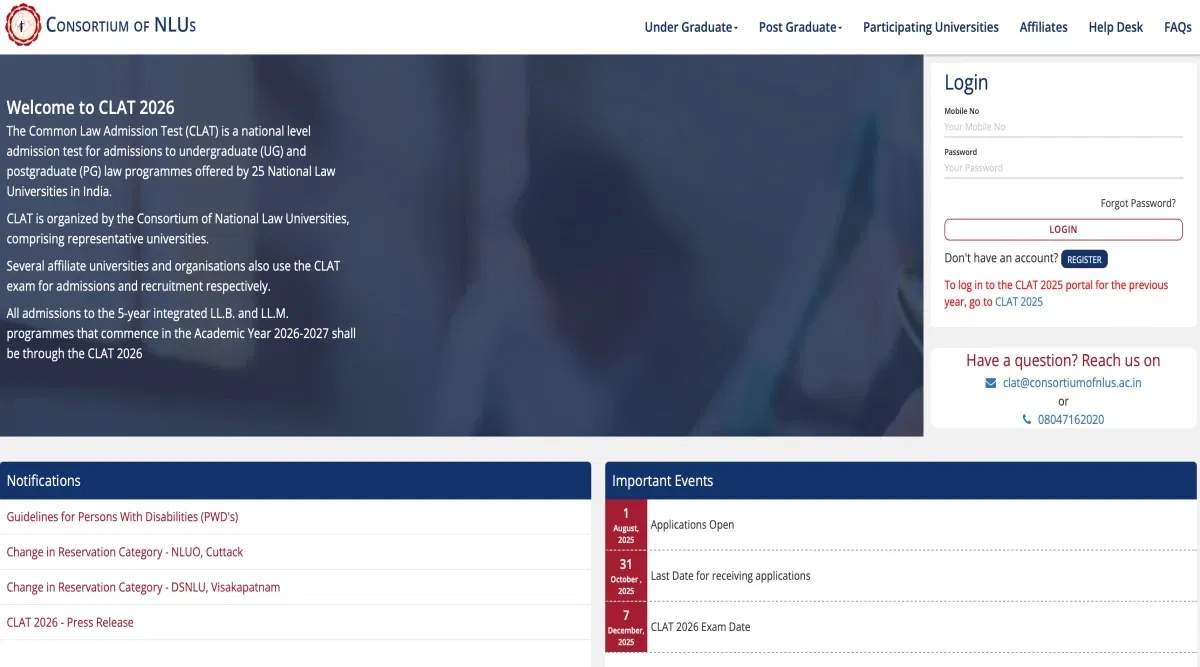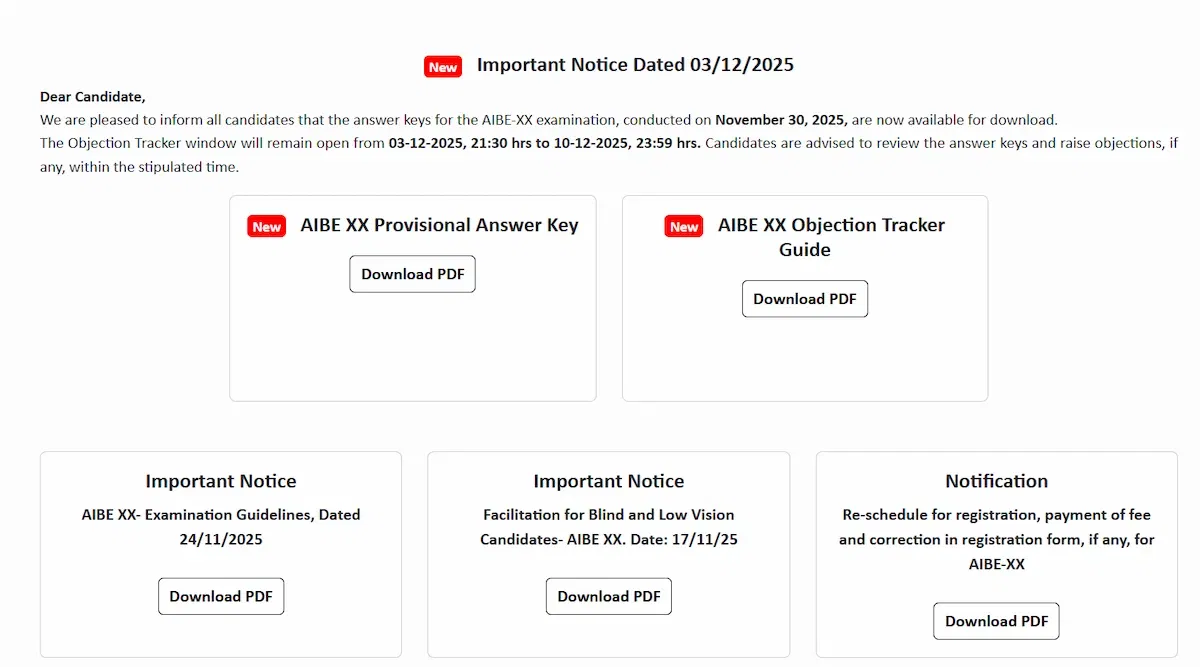The list of top NIRF Law Ranking 2025 colleges has been published by the National Institutional Ranking Framework under the Ministry of Education. Candidates can check out the Law colleges ranking and the scores achieved by them.
Table of Contents
The list of top colleges as per the NIRF law ranking 2025 includes the National Law School of India University (Bengaluru), the National Law University (New Delhi), the Nalsar University of Law (Hyderabad), and the West Bengal National University of Juridical Science (Kolkata).
The parameters determined by the National Institute Ranking Framework (NIRF) for law college ranking are based on teaching, learning, and resources; research and professional practice; graduation outcomes; outreach and inclusion; and peer perception.
Also, Check: NIRF Ranking for Top Colleges in India
List of Top 30 Colleges under NIRF Law Ranking 2025
Students can check out the list of the Top law colleges 2025 in the table given below:
| Rank | Institute ID | Name | City | State | Score |
|---|---|---|---|---|---|
| 1 | IR-L-U-0238 | National Law School of India University | Bengaluru | Karnataka | 82.97 |
| 2 | IR-L-U-0111 | National Law University | New Delhi | Delhi | 80.00 |
| 3 | IR-L-N-18 | NALSAR University of Law | Hyderabad | Telangana | 79.50 |
| 4 | IR-L-U-0585 | The West Bengal National University of Juridical Sciences | Kolkata | West Bengal | 79.39 |
| 5 | IR-L-U-0134 | Gujarat National Law University | Gandhinagar | Gujarat | 76.23 |
| 6 | IR-L-U-0573 | Indian Institute of Technology Kharagpur | Kharagpur | West Bengal | 74.09 |
| 7 | IR-L-C-19328 | Symbiosis Law School, Pune | Pune | Maharashtra | 74.07 |
| 8 | IR-L-U-0108 | Jamia Millia Islamia | New Delhi | Delhi | 66.39 |
| 9 | IR-L-U-0496 | Aligarh Muslim University | Aligarh | Uttar Pradesh | 65.82 |
| 10 | IR-L-U-0363 | Siksha O Anusandhan |
Bhubaneswar | Odisha | 65.36 |
| 11 | IR-L-U-0476 | Shanmugha Arts Science Technology & Research Academy | Thanjavur | Tamil Nadu | 65.29 |
| 12 | IR-L-U-0498 | Babasaheb Bhimrao Ambedkar University | Lucknow | Uttar Pradesh | 65.26 |
| 13 | IR-L-U-0253 | Cochin University of Science and Technology | Cochin | Kerala | 65.19 |
| 14 | IR-L-U-0356 | Kalinga Institute of Industrial Technology | Bhubaneswar | Odisha | 65.04 |
| 15 | IR-L-U-0358 | National Law University | Cuttack | Odisha | 63.66 |
| 16 | IR-L-C-23907 | Dr. B. R. Ambedkar College of Law | Visakhapatnam | Andhra Pradesh | 63.12 |
| 17 | IR-L-U-0063 | Chanakya National Law University | Patna | Bihar | 62.40 |
| 18 | IR-L-U-0564 | UPES | Dehradun | Uttarakhand | 61.45 |
| 19 | IR-L-I-1441 | Saveetha Institute of Medical and Technical Sciences | Chennai | Tamil Nadu | 60.90 |
| 20 | IR-L-U-0213 | Alliance University | Bengaluru | Karnataka | 60.83 |
| 21 | IR-L-U-0511 | Dr. Ram Manohar Lohiya National Law University, Lucknow | Lucknow | Uttar Pradesh | 60.12 |
| 22 | IR-L-U-0099 | Guru Gobind Singh Indraprastha University | New Delhi | Delhi | 60.05 |
| 23 | IR-L-U-0062 | Central University of South Bihar | Gaya | Bihar | 58.84 |
| 24 | IR-L-U-0217 | Christ University | Bengaluru | Karnataka | 58.40 |
| 25 | IR-L-U-0473 | S.R.M. Institute of Science and Technology | Chennai | Tamil Nadu | 58.00 |
| 26 | IR-L-U-0379 | Lovely Professional University | Phagwara | Punjab | 57.98 |
| 27 | IR-L-U-0285 | National Law Institute University, Bhopal | Bhopal | Madhya Pradesh | 57.64 |
| 28 | IR-L-U-0880 | Maharashtra National Law University, Nagpur | Nagpur | Maharashtra | 56.54 |
| 29 | IR-L-U-0524 | University of Lucknow | Lucknow | Uttar Pradesh | 55.85 |
| 30 | IR-L-U-0600 | National University of Study & Research in Law, Ranchi | Ranchi | Jharkhand | 55.81 |
Also, Check: How to Become a Judge in India
NIRF Law Ranking Criteria
The NIRF Law Ranking list is based on the parameters set by the NIRF. The NIRF Law Ranking Criteria have been listed below:
- Teaching, Learning & Resources
- Research and Professional Practice
- Graduation Outcomes
- Outreach and Inclusivity
- Peer Perception
Students can check out the table below to understand the NIRF Law Ranking Criteria in detail:
| Parameters | Details |
| NIRF Law Ranking Criteria | Download Now |
Role of NIRF
The National Institutional Ranking Framework (NIRF) has been approved by the Ministry of Human Resource Development (MHRD). It ranks institutions across the country. The main role of NIRF has been listed below:
- NIRF ranks higher education institutions in India.
- The NIRF ranking framework aims to develop universities and colleges.
- Students who want to know about institutions can check the NIRF ranking to determine whether they wish to attend a particular institute.
- These qualitative parameters will help in making the country's education system higher.
- Accreditation provided by NIRF helps institutions to stand apart and gain recognition.
Also, Check: What is NIRF?
NIRF Ranking Parameters
The parameters set by NIRF for ranking institutions have been listed below:
- Teaching, Learning & Resources (TLR) - These parameters are related to the core activities of any place of learning.
- Research and Professional Practice (RP) - The scholarship is closely associated with excellence in teaching and learning.
- Graduation Outcomes (GO) - This parameter tests the core teaching/learning effectiveness.
- Outreach and Inclusivity (OI) - The Ranking framework lays particular emphasis on the representation of women.
- Peer Perception - This ranking methodology is essential to the institution's perception.
Overall Ranking Parameters and Weightages
The institutions are ranked on the basis of their overall scores.
| S.No. | Parameters | Marks |
| 1. | Teaching, Learning & Resources (TLR) Ranking weight: 0.30 | 100 |
|
Student Strength including Doctoral Students(SS): 20 marks Faculty-student ratio with emphasis on permanent faculty (FSR): 30 marks Combined metric for Faculty with PhD (or equivalent) and Experience (FQE): 20 marks Financial Resources and their Utilisation (FRU): 30 marks |
||
| 2. | Research and Professional Practice (RP) Ranking weight: 0.30 | 100 |
|
Combined metric for Publications (PU): 35 marks Combined metric for Quality of Publications (QP): 35 marks IPR and Patents: Published and Granted (IPR): 15 marks Footprint of Projects and Professional Practice (FPPP): 15 marks |
||
| 3. | Graduation Outcomes (GO) Ranking weight: 0.20 | 100 |
|
Metric for University Examinations(GUE): 60 marks Metric for Number of Ph.D. Students Graduated (GPHD): 40 marks |
||
| 4. | Outreach and Inclusivity (OI) Ranking weight: 0.10 | 100 |
|
Percentage of Students from Other States/Countries (Region Diversity RD): 30 marks Percentage of Women (Women Diversity WD): 30 marks Economically and Socially Challenged Students (ESCS): 20 marks Facilities for Physically Challenged Students (PCS): 20 marks |
||
| 5. | Perception (PR) Ranking weight: 0.10 | 100 |
|
Academic Peers and Employers (PR): 100 marks |























POST YOUR COMMENT